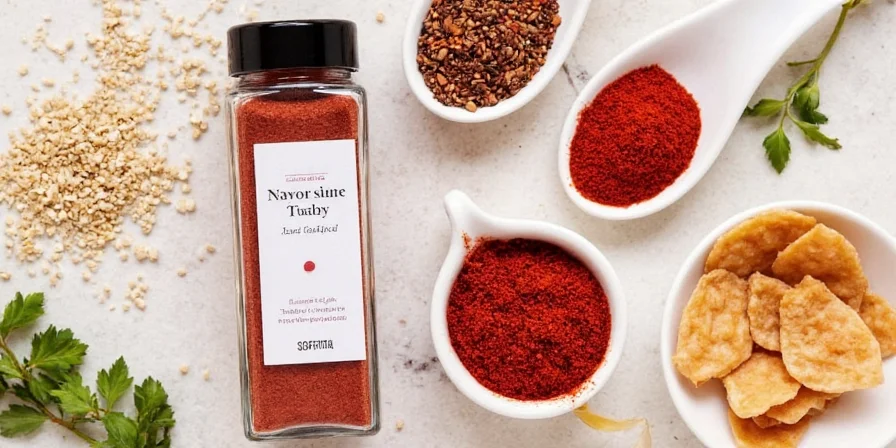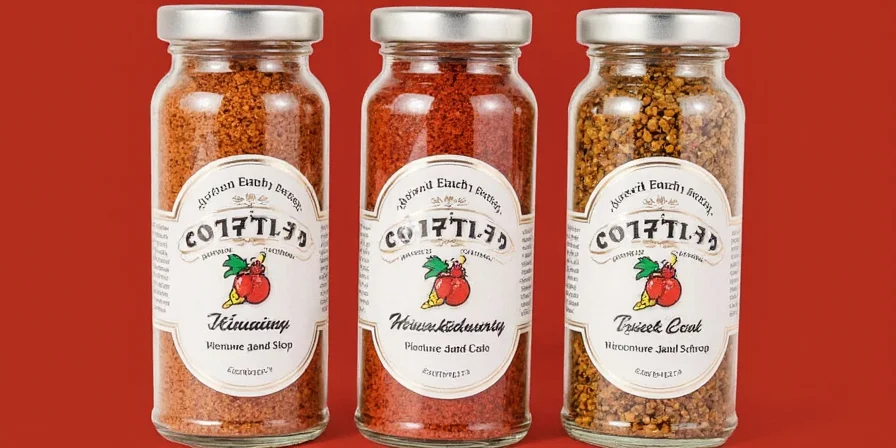Sofrito is a fundamental flavor base in Latin American and Caribbean cooking, consisting of sautéed aromatic ingredients that create complex umami depth in dishes. Unlike European mirepoix, authentic sofrito contains peppers, culantro, and annatto-infused oil, forming the essential foundation for authentic Latin cuisine.
What Exactly Is Sofrito and Why It Matters
At its core, sofrito is a cooked mixture of aromatic ingredients that serves as the flavor catalyst for countless Latin American and Caribbean dishes. This culinary cornerstone transforms simple ingredients into extraordinary meals through carefully balanced components that undergo Maillard reactions during slow cooking.
Key characteristics that define authentic sofrito:
- Oil-based preparation method (unlike water-based mirepoix)
- Contains peppers and culantro (distinguishing it from European counterparts)
- Requires slow cooking to develop 600+ flavor compounds
- Serves as the non-negotiable flavor foundation in authentic recipes
- Varies significantly by region while maintaining core principles

Table of Contents
- Precise Definition: What Is Sofrito?
- Historical Roots and Cultural Evolution
- Regional Variations Across Latin America
- Professional-Grade Usage Techniques
- Crafting Authentic Sofrito at Home
- Store-Bought vs Homemade: Strategic Comparison
- Spice Synergy: Flavor Science and Health Insights
- Cultural Significance and Little-Known Facts
- Frequently Asked Questions
Precise Definition: What Is Sofrito?
Sofrito is the essential flavor base in Latin American and Caribbean cuisines—functioning like France's mirepoix or Italy's soffritto but with distinct regional characteristics. Unlike its European counterparts, sofrito incorporates unique ingredients that create layered umami depth through Maillard reactions during slow cooking.
Core components typically include:
- Onions and garlic (aromatic foundation)
- Peppers (aji dulce, bell peppers, or culantro)
- Fat medium (olive oil, lard, or plant-based alternatives)
- Spice blend (annatto, cumin, oregano)
- Acidic elements (tomatoes or citrus in some variations)
This mixture creates a concentrated paste that serves as the flavor catalyst for countless dishes, with proper preparation requiring minimum 20 minutes of slow cooking to achieve optimal flavor development.
Historical Roots and Cultural Evolution
The term "sofrito" derives from Spanish "sofreir" (to lightly fry), reflecting its preparation method. Its origins trace to medieval Spain, but it evolved significantly through cultural fusion in the Caribbean. Enslaved Africans introduced ingredients like culantro and annatto, while Indigenous communities contributed ají peppers—creating the distinct sofrito we recognize today.
In Puerto Rican and Dominican traditions, sofrito often includes recao (culantro) and annatto oil, making it more than a background element—it's the flavor architect determining a dish's authenticity. The phrase "sin sofrito no hay comida" (without sofrito there is no food) reflects its cultural non-negotiability in many Latin American kitchens.
Regional Variations Across Latin America
Sofrito's composition reveals cultural identity across regions:
| Region | Distinct Ingredients | Texture & Color Profile | Signature Dish Application |
|---|---|---|---|
| Puerto Rico | Culantro, annatto oil, ham hock | Deep orange, moderately chunky | Arroz con gandules |
| Cuba | Tomatoes, cumin, garlic | Reddish-brown, smooth | Frijoles negros |
| Dominican Republic | Bell peppers, onions, minimal tomato | Vibrant green, finely minced | La Bandera |
| Colombia | Green onions, cilantro, no tomato | Pale green, liquid consistency | Ajiaco |
| Venezuela | Red bell peppers, tomatoes | Bright red, thick paste | Pabellón criollo |
This diversity demonstrates how local agriculture and historical trade routes shaped each variation—making sofrito a culinary map of Latin American heritage. The absence of tomatoes in Dominican "recaito" maintains vibrant green color, while Cuban versions use tomatoes for richer depth.

Professional-Grade Usage Techniques
Elevate your cooking with these chef-approved methods that address common home cook mistakes:
- Timing is critical: Add sofrito early in cooking to build flavor foundations, not as a finishing touch (common error in amateur cooking)
- Oil preservation: Freeze sofrito in ice cube trays submerged in oil for 6+ months shelf life (prevents freezer burn)
- Texture control: Pulse in food processor for sauces, leave chunky for stews (depends on final dish requirements)
- Flavor amplification: Deglaze pan with citrus after sofrito for acid balance (counteracts potential bitterness)
- Vegetable enhancement: Stir into roasted vegetables during last 5 minutes of cooking (preserves volatile flavor compounds)
Crafting Authentic Sofrito at Home
Create versatile sofrito with this foundational recipe that addresses common preparation errors:
Traditional Sofrito Recipe (Puerto Rican Style)
| Ingredient | Quantity | Preparation Notes |
|---|---|---|
| Yellow onions | 2 medium | Fine dice for even cooking (large chunks cause uneven flavor) |
| Garlic cloves | 6 | Minced, not pressed (prevents bitterness) |
| Aji dulce peppers | 4 | Substitute: 1 bell pepper + 1 habanero (seeds removed) |
| Culantro (recao) | 1 bunch | Cilantro stems work as substitute (but lack epigeeranyl) |
| Annatto seeds | 1 tbsp | Infused in oil for 5 minutes, then strained (creates color without bitterness) |
| Tomato paste | 1 tbsp | Optional for Cuban-style (add after peppers) |
| Fat medium | ¼ cup | Lard, olive oil, or coconut oil (lard creates richest mouthfeel) |
- Infuse annatto seeds in heated fat medium for 5 minutes, then remove seeds (critical for authentic color)
- Sauté onions over medium-low heat until translucent (8 minutes; avoid browning)
- Add garlic and peppers; cook until softened (5 minutes; high heat causes bitterness)
- Incorporate culantro and tomato paste; stir constantly for 2 minutes (prevents scorching)
- Reduce heat to low; simmer uncovered for 15 minutes (total minimum 20 minutes cooking time)
- Cool completely before storing (traps volatile flavor compounds)

Store-Bought vs Homemade: Strategic Comparison
Make informed choices with this detailed analysis of commercial products:
| Critical Factor | Homemade Sofrito | Store-Bought Sofrito |
|---|---|---|
| Flavor Complexity | Customizable depth through ingredient ratios and cooking time | Standardized profile; often lacks layered notes (check for MSG) |
| Ingredient Quality | Control over freshness and organic sourcing | May contain preservatives (sodium benzoate) or inferior oils |
| Shelf Stability | 7 days refrigerated; 6 months frozen (in oil) | 6-12 months unopened; 2 weeks after opening (check "best by" date) |
| Cultural Authenticity | Precise regional replication possible | Often generalized (Goya Sofrito lacks annatto oil for authentic color) |
| Cost Efficiency | $0.75 per cup (bulk ingredient pricing) | $2.50-$4.00 per cup (premium brands cost more) |
| Common Pitfalls | Improper moisture reduction causing freezer separation | Over-reliance on tomato creating acidic imbalance |
Spice Synergy: Flavor Science and Health Insights
Sofrito's spice blend creates biochemical interactions beyond basic flavor enhancement, explaining why it outperforms individual spice additions:
- Cumin: Contains thymoquinone which enhances iron absorption by 300% when paired with vitamin C (present in peppers)
- Annatto: Provides bixin (a carotenoid) with 10x the antioxidant capacity of beta-carotene (creates signature color)
- Garlic: Allicin compounds activate when crushed and benefit from fat-soluble delivery (oil-based preparation is essential)
- Black Pepper: Piperine increases curcumin bioavailability by 2000% (relevant when using turmeric in Caribbean variations)
- Culantro: Higher epigeeranyl concentration than cilantro for sustained flavor release (explains Puerto Rican preference)
This synergy explains why properly prepared sofrito creates more balanced nutrition and complex flavors than individual spice additions. The slow cooking process allows formation of 600+ distinct flavor compounds—more than steak searing.

Cultural Significance and Little-Known Professional Insights
Discover often-missed aspects of sofrito's cultural dimensions:
- Cuban abuelas traditionally add a splash of dry sherry to sofrito for acidity balance (never vinegar, which alters flavor profile)
- Vegan adaptations using coconut oil emerged from Afro-Caribbean spiritual practices (Santería cooking traditions)
- Properly cooked sofrito should darken slightly, coat the back of a spoon, and release oil around edges (indicating complete moisture evaporation)
- The "separation" problem in frozen sofrito occurs when water-based ingredients aren't properly reduced (simmer until no visible liquid remains)
- Commercial sofrito often fails because it's processed too quickly (minimum 20 minutes required for proper Maillard reactions)

Frequently Asked Questions
What distinguishes sofrito from mirepoix?
Sofrito uses tomatoes, peppers, and herbs like culantro that undergo Maillard reactions, while mirepoix (French) relies on onions, carrots, and celery cooked gently without browning. Sofrito's oil-based preparation creates deeper umami complexity essential for Latin dishes.
Can sofrito be made without animal products?
Absolutely. Traditional Puerto Rican sofrito often uses lard, but authentic vegan versions substitute with olive oil or coconut oil. The key is maintaining fat-soluble spice infusion—annatto oil works particularly well for color and flavor without animal products.
Why does my homemade sofrito separate when frozen?
This occurs when water-based ingredients (like fresh peppers) aren't properly reduced. Simmer until no visible liquid remains before cooling. For best results, freeze in oil-submerged portions to prevent freezer burn and texture degradation—a common professional technique.
How long should sofrito cook to develop optimal flavor?
Minimum 20 minutes on low heat. Rushing creates raw vegetable notes. Properly cooked sofrito should darken slightly, coat the back of a spoon, and release oil around the edges—indicating complete moisture evaporation and flavor concentration that home cooks often miss.
What's the science behind sofrito's flavor enhancement?
Sofrito leverages the "holy trinity" of flavor development: Maillard reactions (browning), fat-soluble spice infusion, and enzymatic breakdown of alliin in garlic. The slow cooking allows synergistic compound formation that single-ingredient additions can't replicate—explaining why it's non-negotiable in authentic Latin cooking.
Key Takeaways for Authentic Results
Sofrito is far more than an ingredient—it's the flavor DNA of Latin and Caribbean cuisines. This aromatic foundation transforms ordinary meals through carefully balanced components that create complex chemical interactions during cooking. The critical success factors are: minimum 20 minutes cooking time, proper moisture reduction before freezing, and regionally appropriate ingredient selection. Store a properly prepared batch in your freezer, and you'll always have the essence of authentic Latin cooking at your fingertips—ready to elevate rice, beans, stews, and more with professional results.











 浙公网安备
33010002000092号
浙公网安备
33010002000092号 浙B2-20120091-4
浙B2-20120091-4